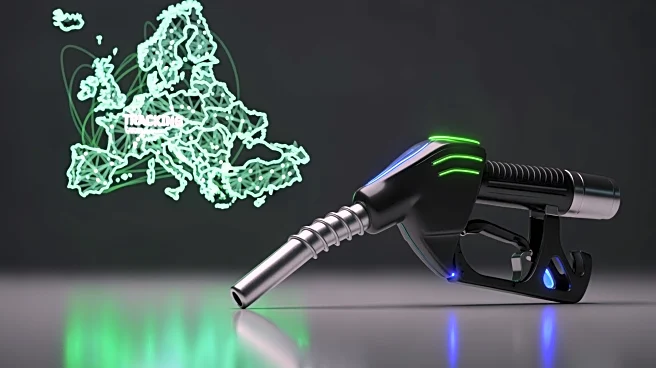What's Happening?
Stellantis has initiated the HVO Aurora project to track and certify the use of hydrotreated vegetable oil (HVO) in commercial vehicle fleets. The project involves a month-long European road tour using
Citroën Berlingo and Fiat Professional Ducato vans equipped with SP3H’s FluidBox Micro sensor. These sensors monitor fuel type, trip distance, and consumption, transmitting data to a cloud platform. HVO is a renewable fuel made from waste materials like used cooking oils and animal fats. Stellantis aims to demonstrate that HVO can be used in existing vehicles without modifications, thereby reducing emissions.
Why It's Important?
The HVO Aurora project represents a significant step towards sustainable fuel usage in the automotive industry. By utilizing HVO, Stellantis aims to reduce well-to-wheel emissions, offering an immediate solution for lowering carbon footprints without requiring changes to existing vehicle fleets or infrastructure. This initiative could influence other automakers to adopt similar practices, potentially leading to broader industry shifts towards renewable fuels. Businesses using Stellantis vehicles may benefit from data on low-carbon fuel consumption and estimated CO2 savings, aligning with global sustainability goals.
What's Next?
Stellantis plans to continue the European road tour, gathering data to validate the effectiveness of HVO in reducing emissions. The company may expand the project to include more vehicles and regions, depending on the results. Stakeholders, including environmental groups and regulatory bodies, are likely to monitor the project's outcomes closely. Success could lead to increased adoption of HVO across the automotive sector, influencing policy decisions and encouraging further investment in renewable fuel technologies.
Beyond the Headlines
The project highlights ethical considerations in the automotive industry, emphasizing the need for sustainable practices. It also raises questions about the long-term viability of renewable fuels and their integration into existing infrastructure. As the industry moves towards greener solutions, companies must balance innovation with practicality, ensuring that new technologies are accessible and beneficial to all stakeholders.












